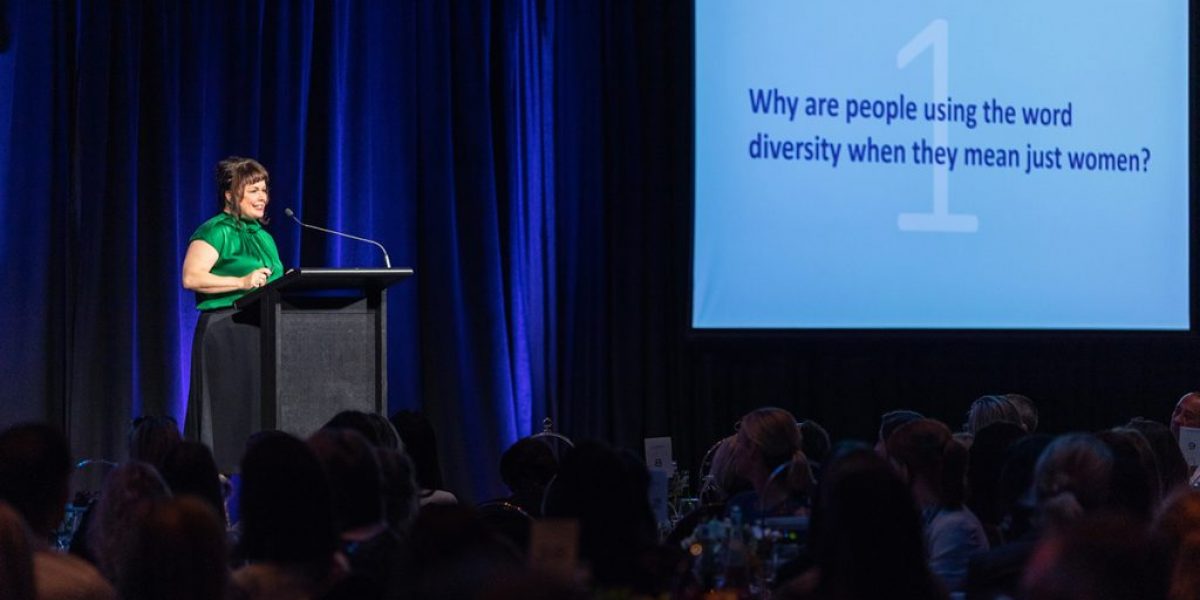The true face of diversity and inclusion isn’t just women
Most of our large corporates are appointing Heads of Diversity & Inclusion, they’re implementing D&I programmes left, right and centre. Bringing in external consultants, writing strategies, making major public statements about what they’re doing in the D&I “space”, where they’re at on their D&I “journey”..!
We’re doing this because it’s the right thing to do, but we’re also doing this because of some fairly major, credible research that consistently points to the positive impact of D&I policies and programmes on operational performance. We’ve got 4 decades of academic and practitioner studies across 20 countries or so telling us that D&I improves employee engagement and satisfaction – reducing staff turnover and recruitment costs. There’s also strong evidence that it drives productivity and innovation.
But it’s the following arguments that are for me the most compelling.
Firstly, New Zealand’s population is changing rapidly which means our labour and consumer markets are too.
Here are – literally – the numbers.
Currently, our average age is 38 and that’s ten years older than what it was only three decades ago, and the number of NZers still working past the age of 65 has doubled in the last decade.
One in four New Zealanders has a disability and this is likely to increase in step with our rapidly ageing population. Māori and Pasifika populations are growing at a rapid pace, in fact, by 2038 over 50% of New Zealand’s population will be Māori, Pasifika and Asian.
44% of people living in Tamaki Makaurau – our largest city – were born overseas.
Secondly, social norms have changed and with them expectations around appropriate roles for women in the workplace, especially after having children. Women are no longer content with lower-level, part-time work just because they’ve had a baby – they no longer want to pay the so-called ‘reproductive tax’!
They expect to have successful careers and get paid well, just like men. Women expect to be leaders, just like men. Women are getting really impatient.
Social norms have also changed around sexuality, and whether or not people should “keep that to themselves”.
Tamati Coffey brought his new baby – that he had with his husband via surrogate – to parliament!
And women like Anika Moa and Alison Mau talk about their wives and girlfriends – without incident!
People now expect to be able to be openly gay or gender diverse in the workplace and for this part of their identity to not count against them.
Thirdly, increasingly people with a disability – and that’s a great many of us – expect to have decent, meaningful employment.
And finally, these kinds of things are becoming important to all of us and New Zealand consumers, clients and investors are demanding that companies show a commitment to D&I.
These are unavoidable social and demographic changes that are transforming the operating environment for companies and the smart ones know that they have to get behind the diversity drive, so that they can attract the best people out there, get the most out of them, and make sure they want to keep on working for them.
Ok, so these are all the main business case arguments aren’t they? And most of us here agree in principle that diversity is important and we all want to do it well.
But before you start making plans, do we all have a consistent view on what diversity is? I mean, what would true diversity look like?
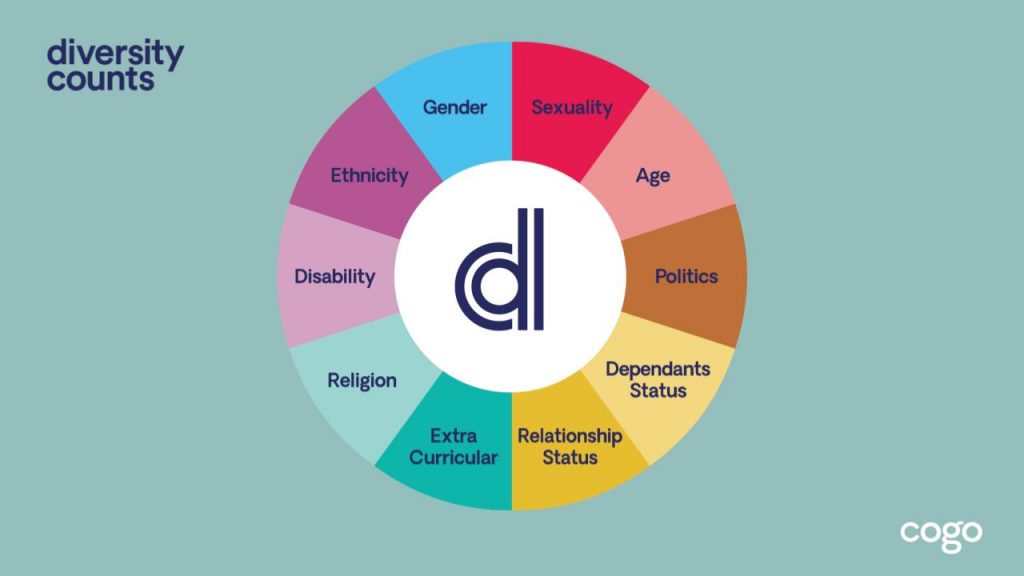
My research agency Cogo is behind a measurement tool called Diversity Counts, which calculates multiple dimensions of diversity at all levels of the workforce. At Cogo we are firm believers in the philosophy that if it doesn’t get measured it doesn’t get managed.
When we were developing Diversity Counts, we went out and talked to a lot of people and heard a lot of different views on what diversity is. A few things have been troubling me and I know this isn’t therapy, but I hope you don’t mind if I work through them with you. I’ve narrowed it down to five!
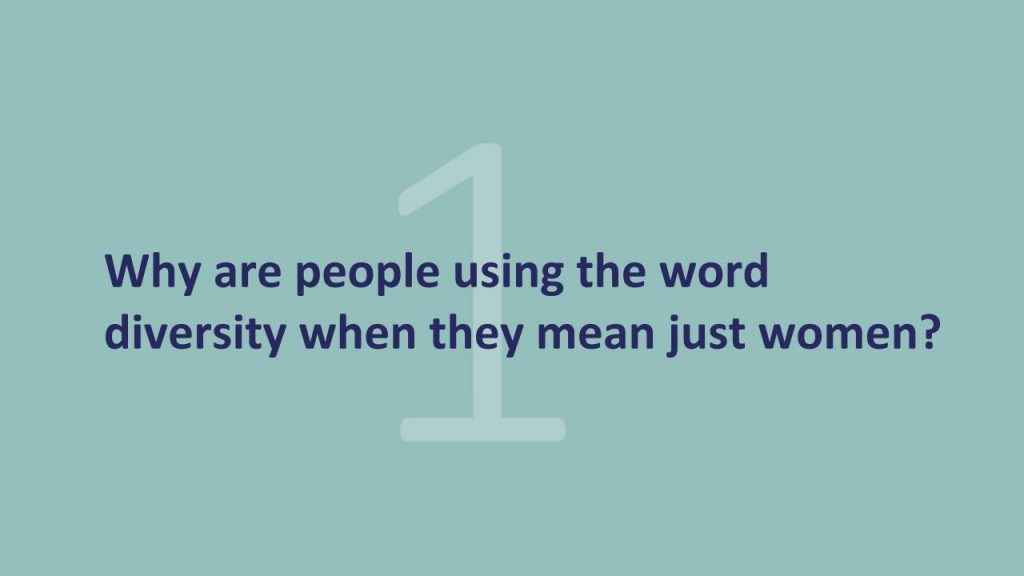
Now I’ve been a fully paid-up, card-carrying feminist my entire life and so you’d think I’d be delighted about this, but when companies say they’ve got a diversity strategy and then they just point to their Women in Leadership programme? That’s not going to bring diversity! But it might support gender equality – maybe.
Same deal here – some companies say that they’re reporting on diversity and it’s just not true, they’re reporting on gender balance only. And often at board level only. And often its only a few women, and sometimes it’s the same women doing double, triple duty on multiple boards! In Norway, they call it the golden skirt effect! This is not diversity. I think we’ve all heard the phrase “pale, stale and male”? Well, pale, stale and female isn’t going to get us much further.
While this singular focus on gender – well, actually women – may improve things for some women, especially golden-skirted women, it means that other dimensions of diversity – ethnicity, age, sexuality, disability – become less important. That’s a problem for equity reasons, but – and this will be more compelling for some – if your goal is to benefit from the increased operational performance that a diverse workforce brings, then focusing on gender only won’t give your diversity strategy its full effect.
Diversity is about the collective. It isn’t just about gender – or ethnicity, or sexuality, or disability in isolation from one another. People have complex identities – and all of these dimensions intersect. So prioritising one dimension of diversity over another is kind of missing the whole point of diversity.
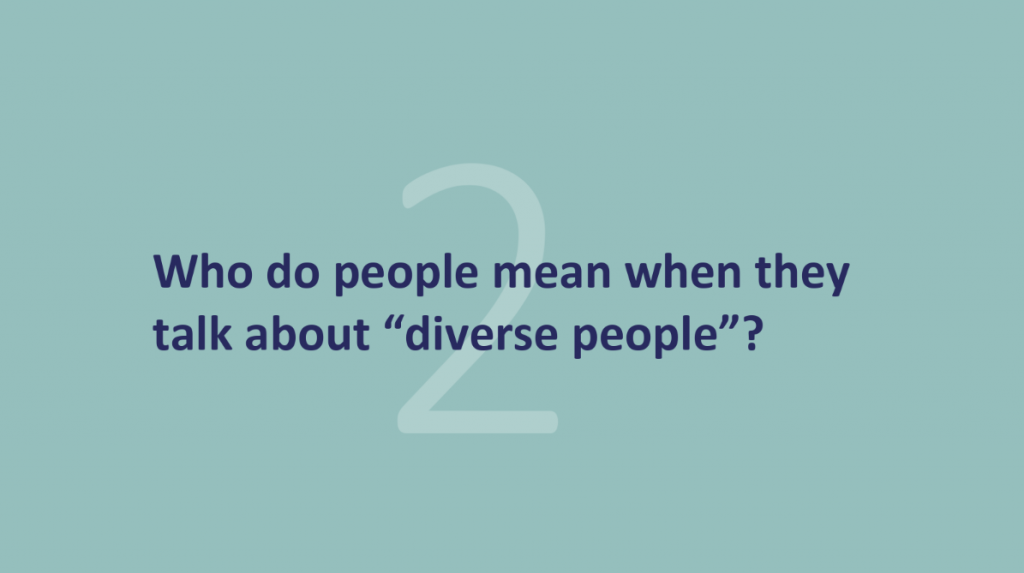
People say things to me like, “we know we need to hire more diverse people”. There is no such thing as a “diverse person”. I am not diverse because I’m a woman. Even a woman who’s Indian and has low vision is not diverse.
But together we could potentially contribute to the diverse make-up of a team – just the same as white men can – depending on who else is in that team. Yes! We still need the old, white, straight men – diversity and inclusion is about enabling a range of views to be heard and theirs are part of the picture. In fact, for sectors that are traditionally female-dominated – like nursing and teaching for example – your focus should be on recruiting more men to support your diversity drive.
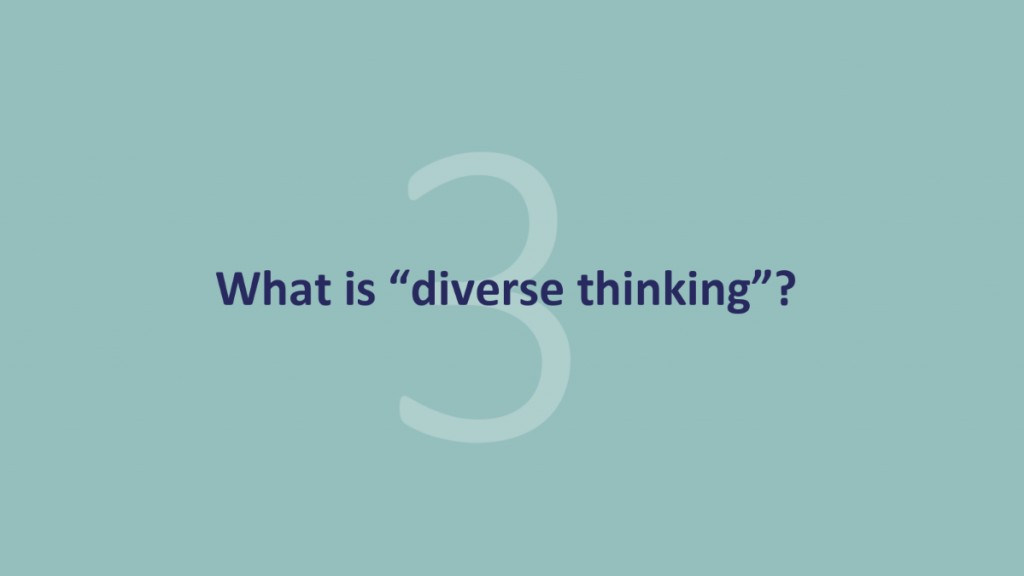
So there’s the business case argument that the more demographically diverse your workforce is, the more you’ll have innovative thinking, because you’re canvassing a wider range of views. Well, some people are now saying that you don’t actually need to have diverse representation in terms of gender, sexuality or disability to get diverse thinking and that there are many other predictors for that, like personal and professional experiences and being able to empathise with other cultures. One report I read talks about having “generational savvy” and “gender smarts”. They argue that anyone can think diversely and that we shouldn’t get hung up on demographics.
Cool, easy! Simply offer up a different point of view at your next meeting and you might be helping your company achieve its diversity goals.
Okay, of course it’s possible to have diverse thinking without demographic representation. But you’ve got a much better shot if you hire a range of people who have a lived experience of being gay or gender diverse, being a woman, being Māori or Pasifika, being blind – or a glorious mixture of all of the above. They are logically going to have followed different pathways through life, and been exposed to substantively different opportunities and challenges compared to other people.
Proponents of diverse thinking as separate from demographic diversity think we should have faith in the status quo – that these guys are going to deliver us the diverse thinking necessary for our new economic reality.
Do you know what this message sounds like to me?
Don’t panic white men! We’ve got you!
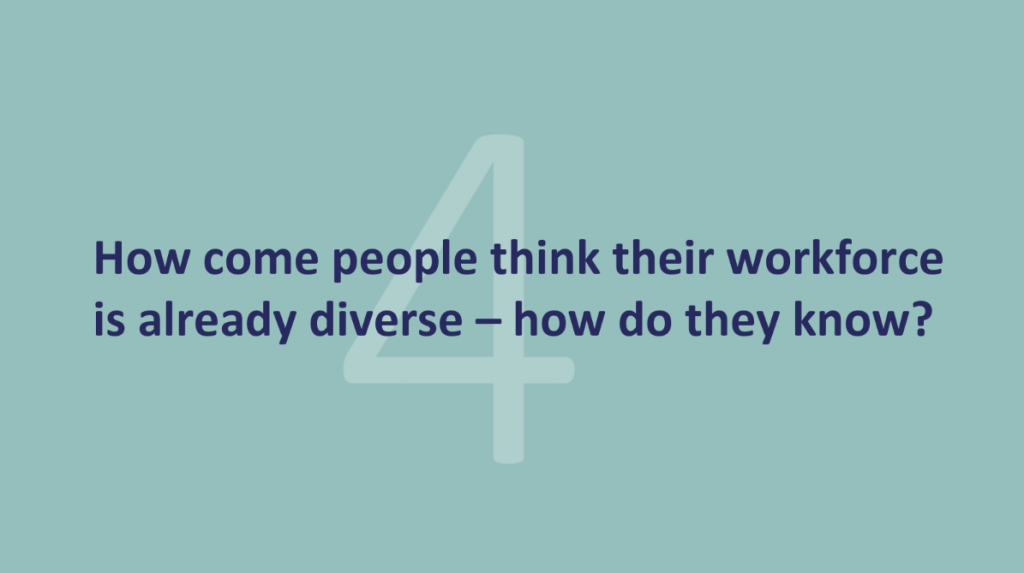
Lots of people say things like, ‘we’re so diverse here at Organisation X’ or ‘you can literally see the diversity here’. You really can’t. You can’t just look around the room and count the women or who you think might be Māori or Pasifika or Bob from Accounts in a wheelchair and suggest that’s a robust measure. For a start, recent research we carried out at Cogo for our client Be. Accessible showed that most people’s disability is not outwardly visible. You don’t know how diverse your organisation is!
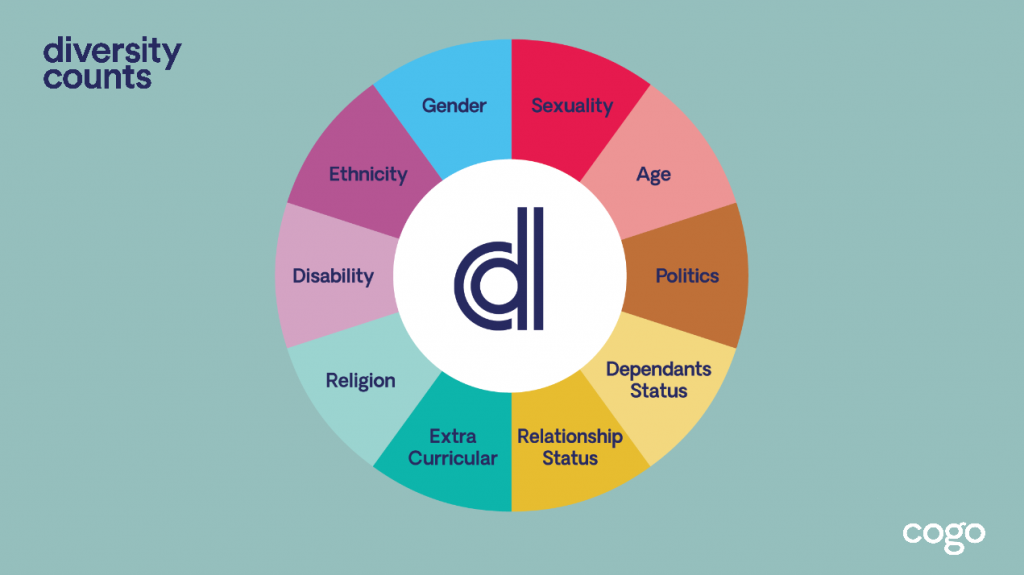
Have a look at our Diversity Counts wheel again and think about where you would sit on all these dimensions. How visible is your diversity?
And, finally…
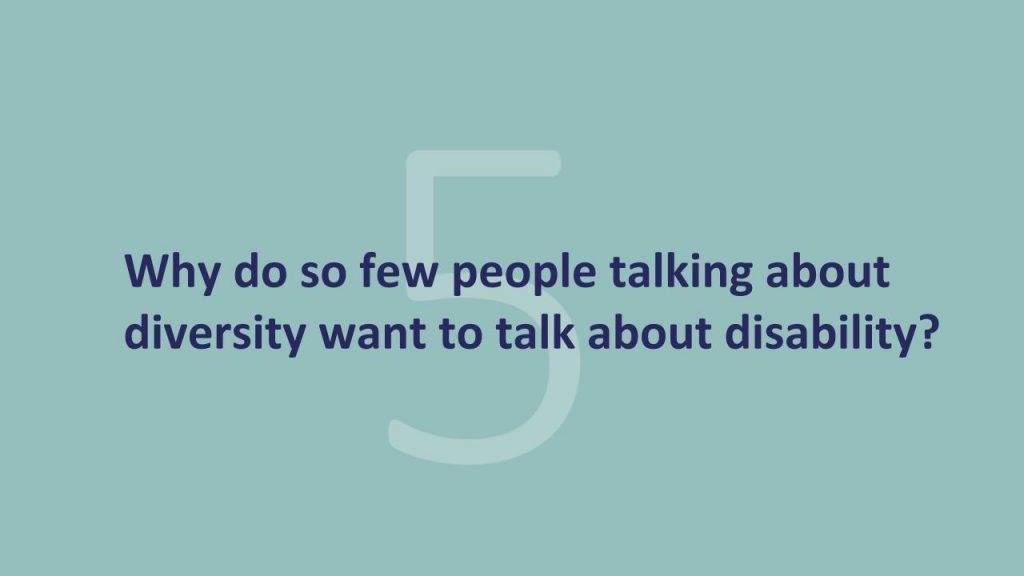
People with a disability or access need are everywhere! Based on the Stats NZ 2013 Disability Survey, 24% of New Zealanders are disabled, which is defined as “being limited in their daily lives by long-term impairment”. In our view at Cogo, that 24% is quite conservative, given that it doesn’t include mental and emotional health challenges, which we measure as part of Diversity Counts. And so you’re really missing a trick here, if you don’t have policies and procedures in place to make sure you’re an accessible organisation. But in order to get to that we need to start including disability in the conversations we’re having about diversity.
Part of the problem I think is that many people have quite a narrow idea of what disability is. Annual research we do consistently shows that most people still think of disability as someone in a wheelchair. Yet it also includes for example, speech impairment, low vision, sensory processing disorder and other forms of neurodiversity.
Another part of the problem I think is that many people are terrified of causing offense by using the wrong terminology. That’s not an excuse to do nothing – if this is you, it’s time to educate yourself! And a really good place to start is the website for the Office for Disability Issues.
So, after all that…
What is Diversity & Inclusion?
The case for D&I depends on demographic representation. As a first step, it’s about making sure that your workforce broadly represents the society we live in, in terms of gender, ethnicity, sexuality, disability and age.
But you can’t just add women, or Māori or LGBTQI people and stir. D&I isn’t about making everyone adapt to our dominant business culture – it’s about designing and building a new system together that includes everyone. And by inclusion I don’t just mean putting some posters up, running monthly morning teas for the Rainbow network or having a powhiri as part of induction – although that’s part of it. I mean formal policies and procedures that mean everyone has the same level of agency, everyone can influence decision-making, and everyone feels like they’re part of essential organisational processes.
Part of building that new system requires a fresh look at what we mean by “appointment or promotion by merit”. It requires a critical review of what we mean when we talk about the “right” skills and competencies for the job. And maybe we need to consider that how skills and competencies are currently defined is actually out-of-date and coincidentally describes the skills and competencies held by the people currently in charge.
But we all need to critically reflect on this, not just the white men. There are many women who have a seat at the top table because they are exceptional. And some of them like being exceptional. I also challenge those women to think about how they can encourage and be part of a new system design.
And so…
How do you achieve diversity and inclusion?
Something we’ve seen at Cogo is that not many companies are evaluating their diversity policies and programmes. And yet these programmes often require a significant investment. Are they actually resulting in better diversity and a more inclusive culture in your company? If you haven’t already, consider getting in someone external to assess your current state – review your strategy, gather insights from the communities in your workplace those policies and programmes are designed to shift the dial for, evaluate whether they’re working and if not design new ones – maybe setting some targets while you’re at it, like Sports NZ and Air New Zealand have done.
At a basic level though, you know your policies are working when you have sufficient levels of demographic representation at all levels of your company year on year, including at entry level – how else are you going to manage your leadership pipeline for diversity? In other words, you know your policies are working when you’re recruiting, promoting and retaining a diverse workforce.
And when it comes to asking these kinds of questions, again, that needs to be done by someone external who can guarantee confidentiality – companies generally don’t get very far when they start asking their staff about their sexuality, or to disclose a disability. So please, this can’t be done in your staff engagement survey or as part of employee induction.
Once you’ve identified where the opportunities are, where you need to focus your attention, then bring in people like Diversity Works, Rainbow Tick, the YWCA Gender Tick, Tupu Toa – who support Māori and Pasifika interns into our large corporates – and Accessibility Tick and they will support you to design better policies and programmes that will help you succeed.
Most of all though, companies need to mean it when they say “We champion Diversity & Inclusion here ”. D & I policies are great for signalling an intent to support a diverse workforce and culture of inclusion. And for some organisations, they’re a great first step. But if your people don’t see you committed to actioning it in substantive ways, then they will become justifiably cynical.
You can’t just roll out that same woman mechanic from your Invercargill site each year for the front cover of your annual report, or Bob from Accounts shouting “But I don’t even work here anymore”. If that’s all you do, your “D&I strategy” is just going to look like lip service and you risk seriously breaking trust with ALL your employees.
Now in closing, I started today by talking about how, for me, some of the most compelling reasons to get behind diversity in the workplace are due to the major social, demographic and economic changes we’re experiencing.
But the original reason for the Diversity and INclusion movement existing is because EXclusion is the norm. For the most part, our current business culture makes it pretty hard for women, non-New Zealand Europeans, people who identify as LGBTQI, and people with a disability to get ahead.
And that’s actually not acceptable any longer (well, actually it’s never been acceptable). And changing that is something everyone needs to be a part of.
Find out more about our next Journey To Excellence event here
